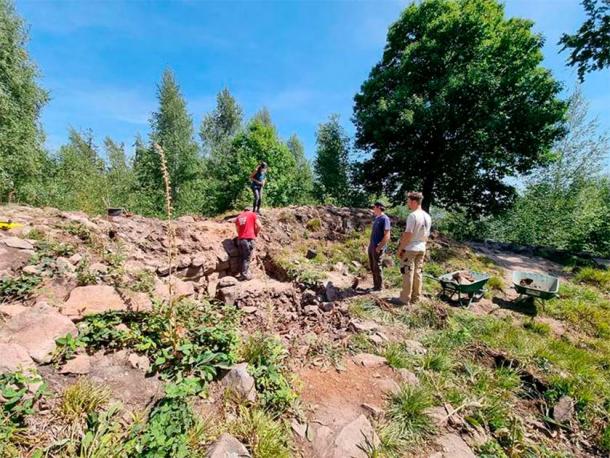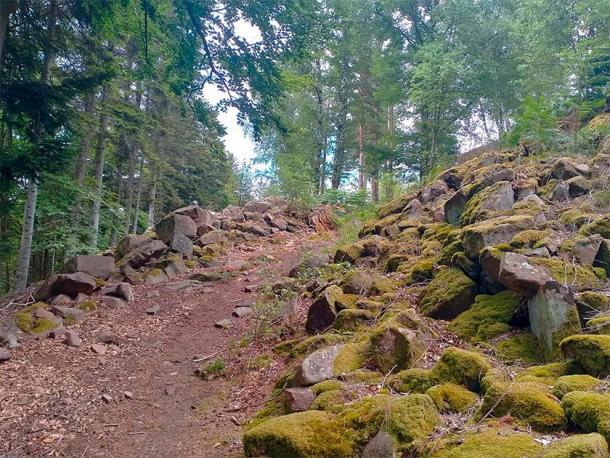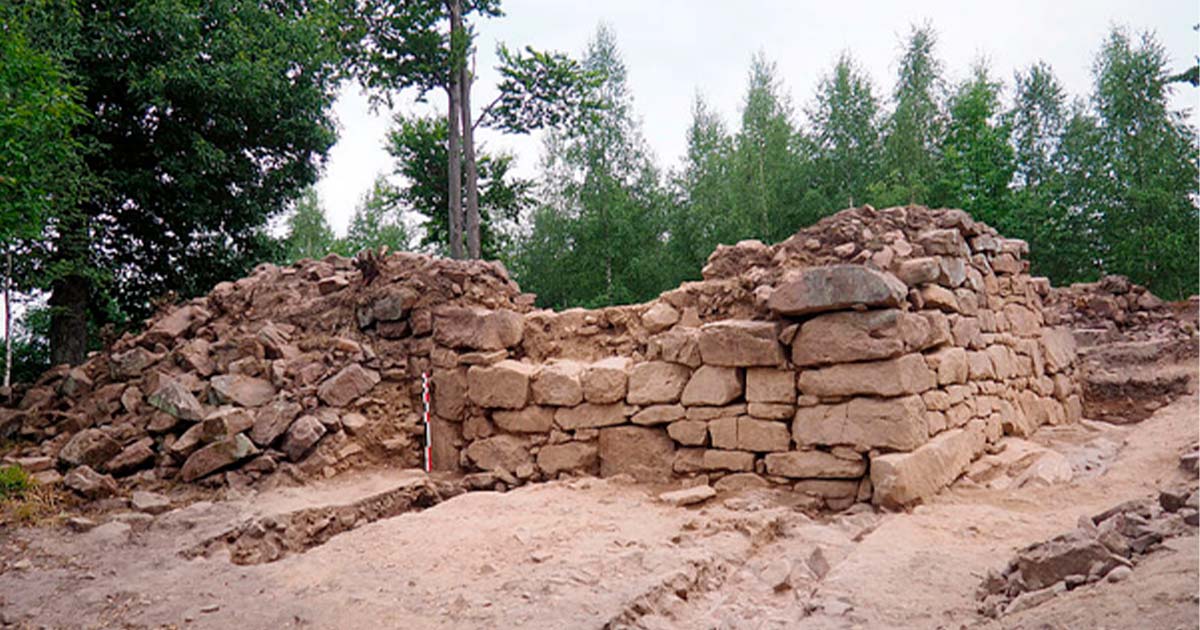“Astounding” 1000-year-old Medieval Castle Excavated Stone by Stone in France
In the picturesque region of Alsace, France, a remarkable discovery has unfolded as the oldest castle in the area resurfaces from the earth! Dating back to the 9th century, and originally established by the family of Pope Leo IX, this amazing Alsace castle rests atop the summit of the Mont Sainte-Odile massif in the Rosheim forest.
Called the Purpurkopf Castle hill in Rosheim, overlooking the scenic Magel valley, the site is now in its second consecutive year of excavation and volunteers here have unearthed a significant portion of this medieval marvel in just five days.
- Medieval Mont St-Michel: The Sacred Castle in the Sea
- The Fascinating History of Medieval Castles: From Emergence to Obsoletion
With shovels, pickaxes and trowels in hand, a dedicated team of around twenty volunteers and archaeology students, led by historian Tristan Martine and archaeologist Florent Minot, have tirelessly worked to unveil the Alsace castle inch by inch, reported ICI France Bleu.
“It's truly astounding to witness the site in this manner,” explained Jean, a volunteer who participated in the excavation last year, reminiscing about the initial discovery when the castle lay concealed beneath a mound of earth and rubble. Today, the castle's foundations stand exposed, with giant 2 meter (6.56 ft) high walls proudly crowning the summit.

Excavations of the Alsace Castle, known as the château d'Alsace or Purpurkopf Castle. (Purpurkopf : Fouilles archéologiques)
Medieval Fortifications and the Purpose of the Alsace Castle
This excavation is particularly significant because it provides a window into understanding medieval fortifications. In the earlier periods, fortifications were primarily occupied by the military rather than the nobility. Purpurkopf Castle likely occupies a transitional phase when fortifications were evolving from military strongholds to noble residences.
“Even we never imagined arriving at such a structure. One has the impression that the castle comes out of the ground. In the Middle Ages, we were not surrounded by trees like today, which means that you could see up to Strasbourg. It also means that the castle is seen throughout the valley, which is politically and symbolically very important,” explained Martine.
EN IMAGES - Le plus ancien château d'Alsace sorti de terre par les archéologues https://t.co/WYcPMJOnLB
— Jean Rev (@Rev_de_Presse) July 16, 2023
He also described the Alsace castle as “huge” for its time period at 19x12x10 meters (62.3x39.3x32.8 ft). Yet, the purpose of this structure remains unclear. Given its strategic location, specialists have suggested it could have served as a customs post, perhaps.
Crossbow tiles and glass beads have also emerged from the excavation which have pointed at the castle's military significance. Yet, Martine has cautioned against jumping to any definite conclusions till further excavations are carried out and completed.

The entrance and ruined remains of the Alsace castle, known as Purpurkopf Castle. (Hervé de Strasbourg / CC BY-SA 4.0)
The Oldest Castle in Alsace Known to Date
“But it's also very rare, for the time, and what makes the building the oldest castle in Alsace known to date… The castles we visit in Alsace, they date from the 12th, 13th century”, explains Martine. “None of them dated from this period within a radius of 200 km are known. There are some in the rest of France, but they are counted on the fingers of one hand.”
- Fleckenstein Castle: From Impregnable Fortress to a Chateaux in Ruins
- 10 Real-life Fairytale Castles from Across Europe
This is not all. Stretching nearly 400 meters in circumference, fragments of Roman ceramics and traces of charcoal have been unearthed within the wall, leading to speculation of an ancient Roman presence at the site of the Alsace castle. It is also possible that medieval builders repurposed and incorporated these remnants into their construction, reported DNA France.
“It's a bit like the Lucie of strong castles,” joked Florent Minot, the archaeologist at the site. “Later castles, we have plenty. We know Roman fortifications. But it is difficult to know from when the nobles start to build castles, and especially what they look like at the very beginning.”
Purpurkopf Castle: Alsace’s Ancient Heritage
Purpurkopf Castle, apart from its historical and architectural significance, holds a legend that has been passed down through generations. According to local folklore, it is believed that the Alsace castle was once home to a mysterious knight who possessed supernatural powers. Tales speak of his ability to control the elements and his unwavering dedication to protecting the region from harm!
The castle's strategic location also played a role in its prominence during conflicts and battles throughout history. The Alsace castle commanded a vantage point that allowed its occupants to survey the surrounding lands and monitor potential threats. Its position as a lookout and defensive stronghold made it an essential component of the region's defensive network.
Top image: Excavated ruins of the oldest castle in Alsace, a.k.a. Purpurkopf Castle. Source: Institut de Recherches Historiques du Septentrion / Université de Lille
By Sahir Pandey
References
Diwisch, V. 13 July “The excavation site of the oldest fortified castle in Alsace open to the public” in DNA. Available at: https://www.dna.fr/culture-loisirs/2023/07/13/le-chantier-des-fouilles-du-plus-ancien-chateau-fort-d-alsace-ouvert-au-public
Marot, A. 16 July 2023. “IN IMAGES - The oldest castle in Alsace released from the ground by archaeologists” in France Bleu. Available at: https://www.francebleu.fr/infos/insolite/en-images-le-plus-ancien-chateau-d-alsace-sorti-de-terre-par-les-archeologues-9843077

















